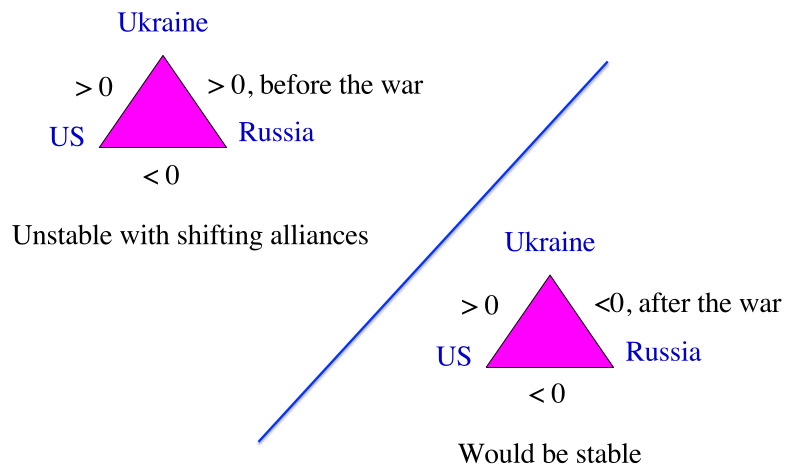 Mon, 28.4.,
Mon, 28.4.,
- 3:30 pm: Reading together
- 4:00 pm: Journal Club with Serge Galam
Seminar room 0.03 in the ETP
Serge Galam is one of the founders of sociophysics, which applies the methods of statistical physics to social contexts. We were able to get him to come to Cologne for the GPK and will hold a Journal Club with him on the paper published in 2023:
The dynamics of alliances: The case of Ukraine and Russia
In the paper, he models the alliances of states analogously to the Ising model of magnetism and analyzes the instabilities that can be identified. Building on this, the effect of supranational alliances such as the Warsaw Pact and NATO and possible geopolitical consequences are discussed.
After a short informal introduction by Serge Galam, we will discuss the paper together. Ideally, you should have a look at the paper beforehand, but if you prefer to do this together, you can also join us at 15:30.
Abstract
I discussed the dynamics of alliances – fragmentation among a set of countries using a sociophysics model. Countries are coupled via pair propensities, which favor either cooperation or conflict, depending on the historical building of each propensity. Propensities have been accumulated over long periods of time and cannot be modified by country respective wills. In contrast, each country is free to satisfy or not a given propensity with respectively a benefit or a cost. The principle that the enemy of my enemy is my friend and the enemy of my friend is my enemy reduces each country choice to either one of two opposite coalitions. Given a set of propensities, some countries may be unable to satisfy simultaneously all their pair propensities. As a consequence, instabilities are produced, which in turn drive a concomitant dynamic of fragmentation and alliances resulting in an endless cycles of alliance reshaping.
In face of this countries hopeless search for stability, I show that the building of competing supranational coalitions, which are joined separately on an individual basis, does stabilize the set of alliances. Cooperation prevails between the respective members of each coalition in parallel with conflict between the two coalitions. Major illustrations of such supra-coalitions are NATO, EU and former Warsaw Pact. The model sheds light on the instabilities, which took place in Eastern Europe following the Warsaw pact dissolution, as well as the preservation of stability in Western Europe. Furthermore, the results hint at the possibility of an additional agenda beyond the per se Russian invasion of Ukraine. Prospects for the related geopolitical consequences are highlighted.